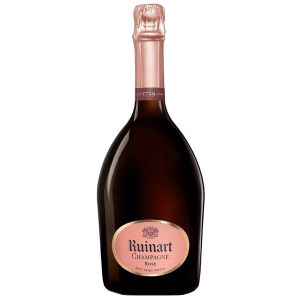Ruinart
The Maison Ruinart is the oldest champagne house in the world and therefore unique among the Grandes Maisons. Maison Ruinart was founded in Reims in 1729 by Nicolas Ruinart and has been producing excellent champagne ever since.
History of House Ruinart
The history of House Ruinart begins with a monk. Dom Thierry Ruinart was a Benedictine monk who came to Paris as a historian and, among other things, observed the young nobles. They drank a sparkling wine that was not yet known as champagne. The wine would quickly gain popularity.
In France at the time, wine could only be transported in barrels and not in bottles, which is so much more advantageous for champagne. Therefore, the monk's vision of producing his own champagne could only be implemented after his death, when Louis XIV passed a new law in 1728 that made it possible to trade wine in bottles.
It was the cloth merchant Nicolas Ruinart who opened the first champagne house in Reims in 1729 in memory of his uncle. The new venture was so successful that the cloth business soon faded into the background and was then dropped altogether. Ruinart soon acquired its first crayeres, medieval tunnels from chalk quarrying. They should now be reused to store the champagne.
Ruinart's crayeres are now the largest in all of Champagne. Up to 8km long and 38m deep in the ground, they have a constant temperature of 11°C, which is ideal for storing and aging the champagne. Some parts of these ancient crayeres have been listed as historical monuments since 1931. They are an essential part of the taste of the Ruinart, as the cuvees are usually stored here for about 4 years, and the vintage champagnes are sometimes even stored for up to 10 years.
In 1764, Ruinart developed the first rose champagne and was able to export it successfully throughout Europe. Ruinart's rosé champagne has since become one of the house's most popular champagnes. In 1817 the Ruinart family was even given an aristocratic title and has since been known as the Ruinart de Brimont.
Today Ruinart is part of the luxury group Moet Hennessy Louis Vuitton. A rather small amount of high-quality champagne is produced under the name Ruinart.
Ruinart champagne
Ruinart Brood
This classic champagne is living history. It was the first champagne that could be produced with consistent quality and is still a benchmark for good champagne today. Once popular among the nobility of Europe, this champagne is now popular in nightclubs and restaurants.
Ruinart Blanc de Blancs
The Ruinart Blanc de Blancs is the epitome of the "Gôut Ruinart", the typical taste of Ruinart. Very early in its history, the house of Ruinart relied on the Chardonnay grape, which today forms the basis for all Ruinart champagne. The assemblage of the Blanc de Blancs contains only the Chardonnay grape. Primarily Premier Crus from the Côte de Blancs and the Montagne de Reims are used. They are complemented by full-bodied Sezannais wines and fresh wines from the Vesle Valley. About a quarter of the wines are reserve wines from the past two years.
The resulting champagne is light and floral on the nose, while being soft and harmonious on the tongue. The freshness of champagne can be felt everywhere. It is excellent as an aperitif or as an accompaniment to nuts.
Ruinart Rosé
There is living history in the Ruinart Rosé Champagne. This champagne is the world's first rosé champagne and it has not lost its popularity in its 250-year history. He owes this to his unique assemblage. As with all Ruinart Champagnes, the Chardonnay grape forms the foundation of the champagne, but here it is complemented by Pinot Noir. Unlike usual, the Pinot Noir is vinified here as a red wine so that it brings both its color and the typical flavors with it.
The result is a champagne that is reminiscent of exotic as well as classic smaller red fruits on the nose. Roses and pomegranate complete the experience. On the palate, the overall picture is that of a full-bodied champagne and light notes of mint and grapefruit can be guessed at.
Dom Ruinart
This champagne bears the name of the great mastermind of champagne, Dom Thierry Ruinart. This historical name hides the Champagne millesime, the vintage champagne from the house of Ruinart. They are pressed with great care and only created for particularly good vintages, when the weather in Champagne was just right throughout the year. The first vintage cuvée of this kind was created in 1966. Since then there have only been 27 of these Dom Ruinart Millesime champagnes.
This is a Blanc de Blancs champagne, created from 100% Chardonnay grapes and thus the core of Ruinart's identity. As a rosé champagne, it is 20% pinot noir and 80% chardonnay.
Sustainability
Haus Ruinart is involved in various sustainability projects. For example in the Reforest'Action project, in which 25,000 trees are planted on the vineyard in Taissy. The aim of this project is to bring back a piece of nature and relaxation to the otherwise intensively used agricultural area of Champagne.
Ruinart has been committed to sustainable viticulture for 20 years. The use of chemical fertilizers and weed killers has been systematically reduced and replaced by more sustainable methods. This does not only apply to the in-house wineries. Ruinart also offers support to all its subcontractors in the transition to a more sustainable economy.







